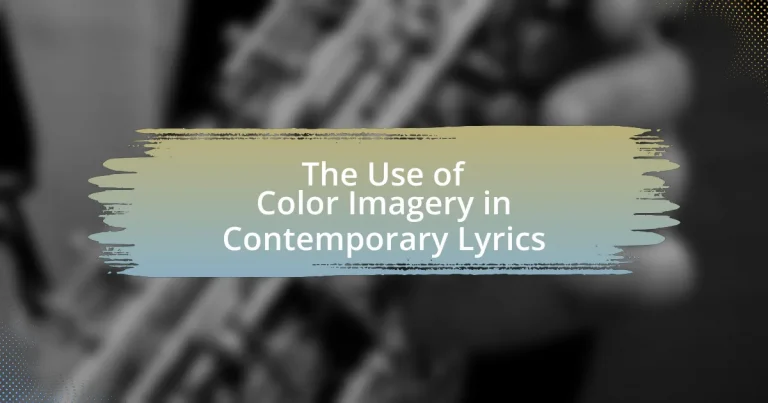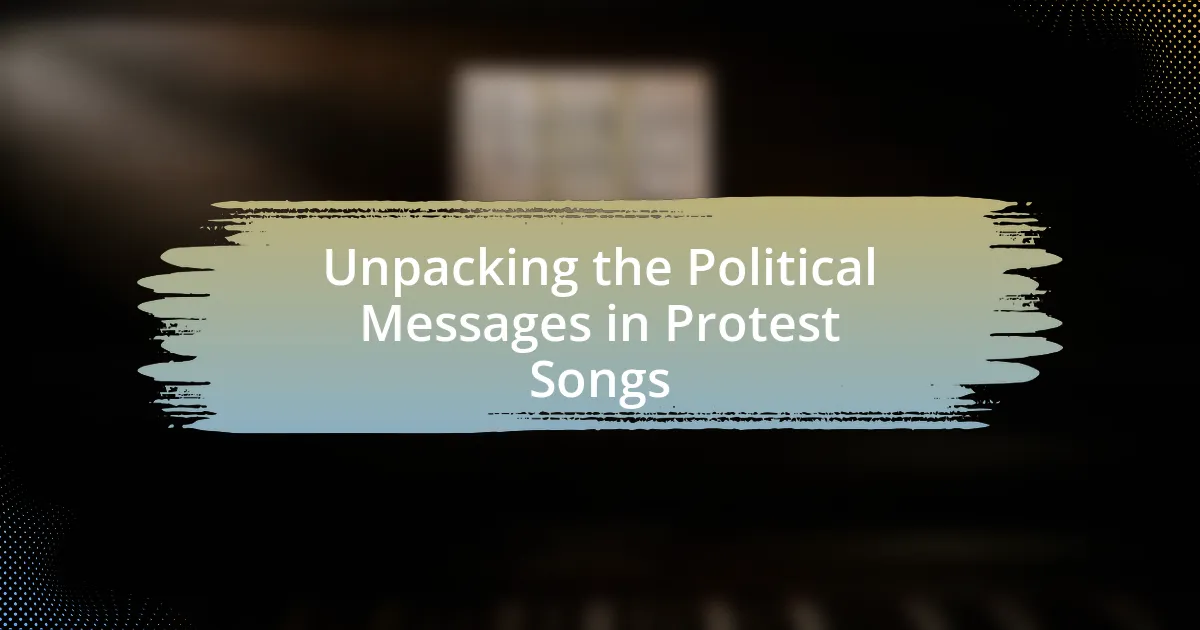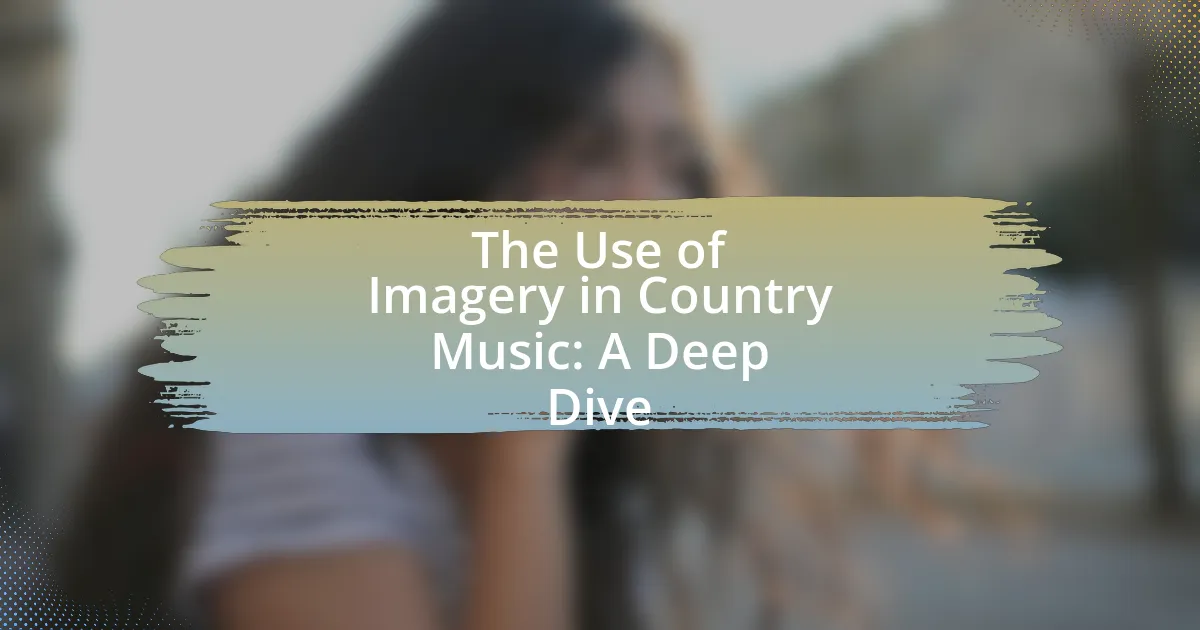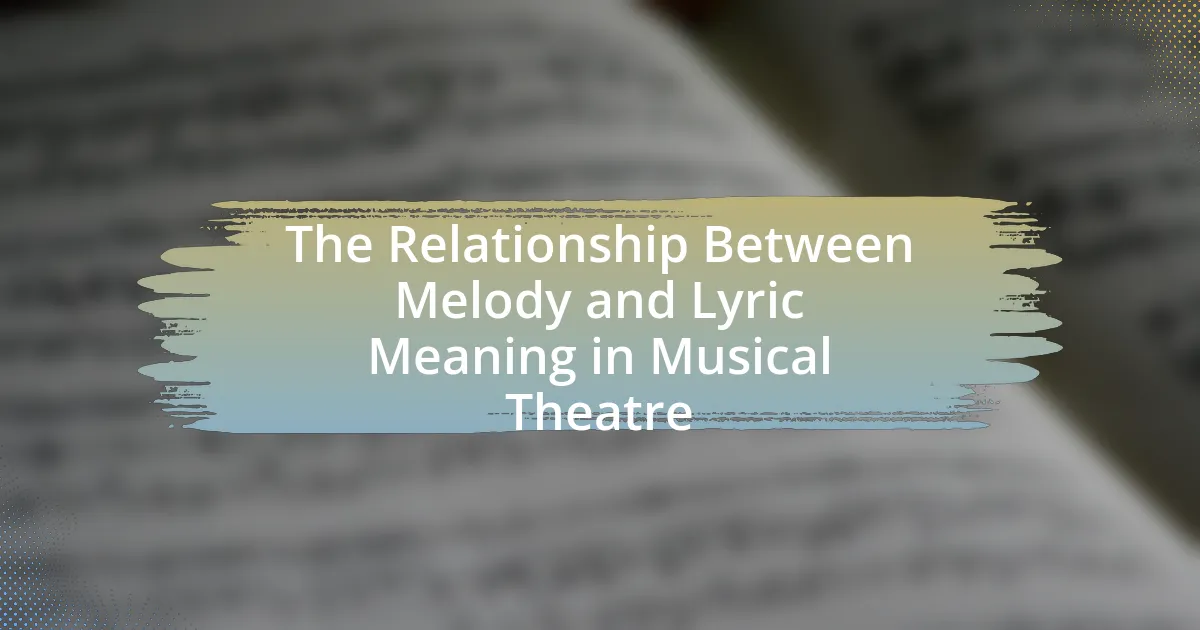The article examines the significance of color imagery in contemporary lyrics, highlighting its role in evoking emotions, creating vivid mental pictures, and conveying complex themes. It discusses how specific colors, such as red, blue, and black, carry distinct meanings and enhance the emotional impact of songs. The article also explores the cultural factors influencing color associations, the techniques songwriters use to incorporate color imagery, and the psychological effects colors have on listeners. Additionally, it addresses the challenges and best practices for effectively using color imagery in songwriting, providing insights into how personal experiences shape interpretation and the potential pitfalls to avoid.

What is the significance of color imagery in contemporary lyrics?
Color imagery in contemporary lyrics serves to evoke emotions, create vivid mental pictures, and convey complex themes succinctly. By utilizing specific colors, artists can tap into cultural associations and psychological responses; for example, red often symbolizes passion or anger, while blue may evoke feelings of sadness or tranquility. This technique enhances the listener’s connection to the song, as evidenced by studies showing that color associations can significantly influence emotional responses to music. Thus, color imagery is a powerful tool in contemporary lyrics, enriching the narrative and emotional depth of the songs.
How does color imagery enhance the emotional impact of lyrics?
Color imagery enhances the emotional impact of lyrics by evoking specific feelings and associations tied to different colors. For instance, the use of red often symbolizes passion or anger, while blue can represent sadness or tranquility. This association allows listeners to connect more deeply with the emotions conveyed in the lyrics, as color imagery creates vivid mental pictures that resonate on a personal level. Research indicates that color can influence mood and perception; for example, a study published in the journal “Color Research and Application” found that colors can significantly affect emotional responses, reinforcing the idea that color imagery in lyrics can amplify emotional engagement and resonance with the audience.
What are some common colors used in contemporary lyrics and their meanings?
Common colors used in contemporary lyrics include blue, red, and black, each carrying distinct meanings. Blue often symbolizes sadness or melancholy, as seen in songs like “Blue” by Joni Mitchell, where it conveys emotional depth. Red typically represents passion or love, illustrated in tracks like “Red” by Taylor Swift, where it evokes intense romantic feelings. Black frequently signifies darkness or despair, as in “Back to Black” by Amy Winehouse, where it reflects themes of loss and heartache. These colors are employed to evoke specific emotions and enhance the lyrical narrative, demonstrating the power of color imagery in music.
How do artists use color imagery to convey specific emotions?
Artists use color imagery to convey specific emotions by associating particular colors with distinct feelings and moods. For example, red often symbolizes passion or anger, while blue can evoke feelings of sadness or tranquility. This association is rooted in psychological studies, such as those conducted by Andrew Elliot and Markus Maier, which demonstrate that colors can significantly influence emotional responses. By strategically incorporating these colors into their work, artists can enhance the emotional impact of their lyrics, guiding listeners to experience the intended feelings more profoundly.
Why is color imagery a popular device among contemporary songwriters?
Color imagery is a popular device among contemporary songwriters because it evokes strong emotional responses and enhances the visual experience of lyrics. By using specific colors, songwriters can convey complex feelings and moods, making their messages more relatable and impactful. For instance, studies show that colors are often associated with particular emotions; blue can signify sadness, while red may represent passion. This association allows songwriters to tap into shared cultural understandings of color, thereby deepening the listener’s connection to the song.
What cultural factors influence the use of color imagery in lyrics?
Cultural factors such as symbolism, tradition, and societal norms significantly influence the use of color imagery in lyrics. Different cultures associate specific colors with particular emotions, events, or concepts; for example, in Western cultures, white often symbolizes purity, while in many Eastern cultures, it can represent mourning. Additionally, historical contexts shape how colors are perceived; for instance, the use of red in lyrics may evoke feelings of passion or danger, reflecting its historical significance in various cultural narratives. Furthermore, contemporary social movements and trends can also impact color imagery, as artists may use colors to convey messages related to identity, politics, or social justice, thereby resonating with their audience’s cultural experiences and values.
How does the use of color imagery differ across various music genres?
The use of color imagery varies significantly across music genres, reflecting their distinct themes and emotional tones. For instance, in pop music, vibrant colors like pink and yellow often symbolize joy and love, as seen in songs like Katy Perry’s “Teenage Dream.” In contrast, blues music frequently employs darker colors such as blue and black to convey sadness and melancholy, exemplified in B.B. King’s “The Thrill Is Gone.” Additionally, hip-hop often utilizes bold colors like gold and red to represent wealth and power, as illustrated in tracks by artists like Kanye West. These differences in color imagery not only enhance the lyrical content but also resonate with the cultural and emotional contexts of each genre.
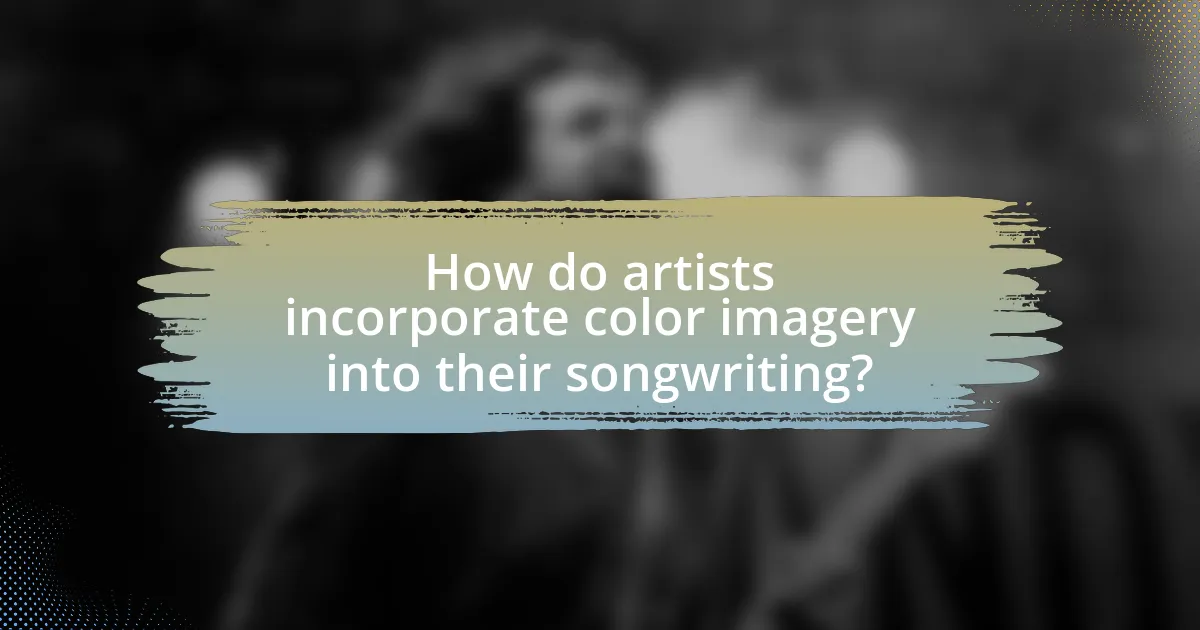
How do artists incorporate color imagery into their songwriting?
Artists incorporate color imagery into their songwriting by using specific colors to evoke emotions, create vivid imagery, and convey themes. For instance, the color blue often symbolizes sadness or melancholy, as seen in songs like “Blue” by Joni Mitchell, where the color reflects emotional depth. Similarly, red can represent passion or anger, evident in tracks like “Red” by Taylor Swift, where the color enhances the intensity of the lyrics. This use of color imagery allows listeners to connect more deeply with the song’s emotional landscape, making the lyrics more relatable and impactful.
What techniques do songwriters use to create vivid color imagery?
Songwriters use techniques such as metaphor, simile, and descriptive language to create vivid color imagery. Metaphors allow songwriters to draw comparisons that evoke strong visual associations, while similes use “like” or “as” to create relatable images. Descriptive language enhances these techniques by providing specific details about colors, emotions, and settings, making the imagery more tangible. For example, in the song “Blue” by Joni Mitchell, the use of the color blue conveys feelings of sadness and longing, illustrating how color can symbolize complex emotions. This approach not only enriches the lyrics but also engages listeners’ imaginations, allowing them to visualize the scenes being described.
How does metaphor play a role in the use of color imagery?
Metaphor significantly enhances the use of color imagery by creating deeper emotional connections and associations. In contemporary lyrics, colors often symbolize specific feelings or concepts; for example, red may represent passion or anger, while blue can signify sadness or tranquility. This symbolic use of color through metaphor allows listeners to engage with the lyrics on a more profound level, as they interpret the emotional weight behind the colors. Research indicates that metaphorical language, including color imagery, activates emotional responses in the brain, making the experience of the lyrics more impactful and memorable.
What are examples of effective color imagery in popular songs?
Effective color imagery in popular songs includes “Blue” by Joni Mitchell, where the color evokes feelings of sadness and longing, and “Black” by Pearl Jam, which uses the color to convey deep emotional pain and loss. In “Red” by Taylor Swift, the color symbolizes intense love and passion, while “Yellow” by Coldplay represents warmth and affection. These examples illustrate how color imagery enhances emotional depth and resonance in lyrics, allowing listeners to connect with the themes on a more visceral level.
How does the audience interpret color imagery in lyrics?
The audience interprets color imagery in lyrics as a means to evoke emotions and convey deeper meanings. Color associations often trigger specific feelings; for example, red may symbolize passion or anger, while blue can represent sadness or tranquility. Research indicates that color perception is linked to emotional responses, as demonstrated in studies like “The Influence of Color on Emotion” by Andrew Elliot and Markus Maier, which found that colors can significantly affect mood and behavior. This connection allows listeners to derive personal significance from the lyrics, enhancing their overall experience and engagement with the music.
What psychological effects do colors have on listeners?
Colors have significant psychological effects on listeners, influencing emotions, perceptions, and behaviors. For instance, studies show that warm colors like red and orange can evoke feelings of excitement and passion, while cool colors such as blue and green often promote calmness and relaxation. Research conducted by the Institute for Color Research indicates that people make subconscious judgments about a person, environment, or product within 90 seconds of initial viewing, with color being a primary factor in this assessment. Additionally, color associations can vary culturally; for example, white is often linked to purity in Western cultures but can symbolize mourning in some Eastern cultures. These psychological effects of colors play a crucial role in how listeners interpret and connect with lyrical content in music.
How does personal experience shape the interpretation of color imagery?
Personal experience significantly influences the interpretation of color imagery by creating unique associations and emotional responses to specific colors. For instance, an individual who has positive memories associated with the color blue, such as a childhood beach vacation, may interpret blue imagery in lyrics as calming or nostalgic. Conversely, someone who has experienced sadness linked to the color gray may perceive gray imagery as bleak or depressing. Research indicates that color perception is subjective and can vary widely based on personal history, cultural background, and emotional context, as highlighted in studies like “Color and Emotion: A Review of the Literature” by Andrew Elliot and Markus A. Maier, which demonstrates how personal experiences shape emotional responses to colors.
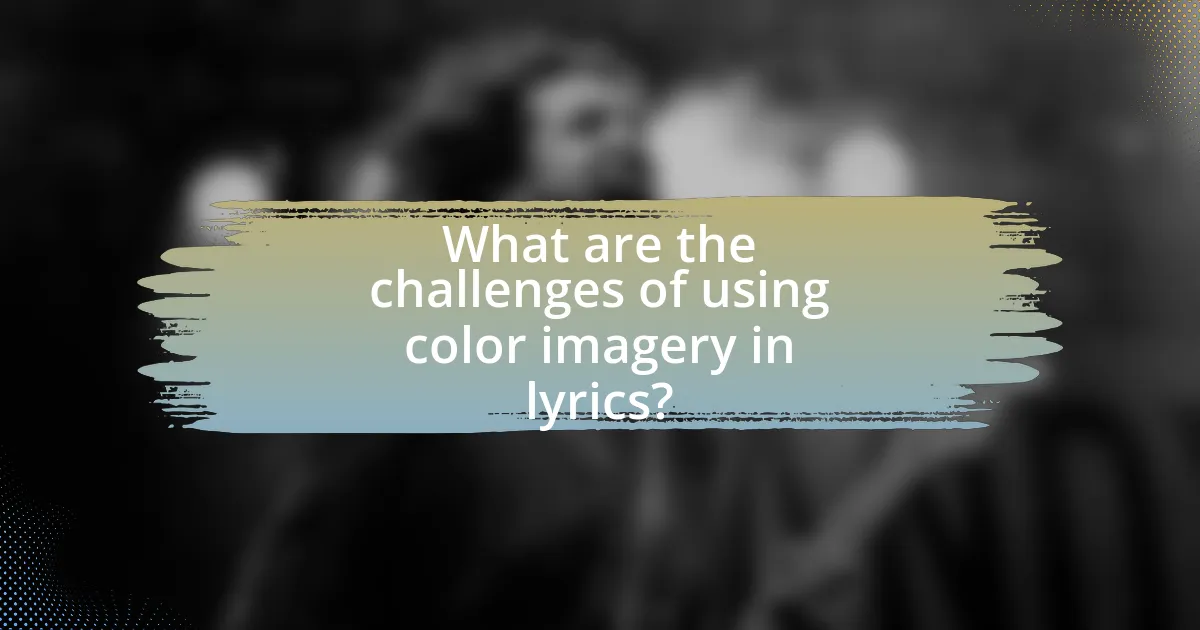
What are the challenges of using color imagery in lyrics?
The challenges of using color imagery in lyrics include ambiguity in interpretation and cultural differences in color perception. Ambiguity arises because colors can evoke different emotions and meanings for different listeners, leading to varied interpretations of the same lyric. For instance, while red may symbolize love for some, it can represent anger for others. Cultural differences further complicate this, as colors hold distinct meanings across cultures; for example, white signifies purity in Western cultures but mourning in some Eastern cultures. These factors can hinder the intended emotional impact of the lyrics and create disconnects between the artist’s message and the audience’s understanding.
What pitfalls should songwriters avoid when using color imagery?
Songwriters should avoid using color imagery that is overly clichéd or vague, as it can dilute the emotional impact of their lyrics. Clichéd phrases like “feeling blue” or “green with envy” lack originality and fail to evoke strong imagery. Additionally, using color imagery that does not align with the song’s overall theme can confuse listeners and detract from the intended message. For instance, if a song conveys sadness, introducing bright colors without context may create a dissonance that undermines the emotional tone. Therefore, songwriters must ensure that their color choices are specific, relevant, and enhance the narrative rather than detract from it.
How can overuse of color imagery detract from a song’s message?
Overuse of color imagery can detract from a song’s message by overwhelming the listener and obscuring the intended emotional impact. When a song excessively employs vivid color descriptions, it risks creating confusion or diluting the core themes, making it difficult for the audience to connect with the underlying message. For instance, if a song uses too many contrasting colors without a clear purpose, it can lead to a sensory overload that distracts from the narrative or emotional journey the artist aims to convey. This phenomenon is supported by studies in music psychology, which indicate that clarity and focus in lyrical content enhance listener engagement and emotional resonance.
What are some examples of ineffective use of color imagery in lyrics?
Ineffective use of color imagery in lyrics often occurs when the colors lack emotional resonance or fail to connect with the song’s themes. For instance, using the color “blue” to describe sadness without any contextual depth can feel clichéd and uninspired, as seen in many pop songs that rely on this trope without further exploration. Additionally, lyrics that mention colors like “green” or “red” without a clear metaphor or narrative purpose can confuse listeners, making the imagery feel arbitrary rather than evocative. This lack of specificity can dilute the intended emotional impact, as demonstrated in songs where color references are merely decorative rather than integral to the storytelling.
What best practices can songwriters follow for effective color imagery?
Songwriters can enhance effective color imagery by using specific and evocative language that connects emotions to colors. This practice allows listeners to visualize scenes and feel the intended emotions associated with those colors. For example, associating the color blue with sadness or red with passion creates a strong emotional response. Research indicates that color can evoke psychological reactions; for instance, studies show that colors can influence mood and perception, which supports the idea that precise color imagery can deepen the listener’s experience. Additionally, incorporating sensory details related to colors, such as textures or sounds, can further enrich the imagery and make it more relatable.
How can songwriters balance color imagery with lyrical clarity?
Songwriters can balance color imagery with lyrical clarity by using specific, vivid descriptions that enhance the emotional impact without obscuring the message. For instance, employing precise color terms like “crimson” instead of “red” can evoke stronger imagery while still maintaining clarity in the narrative. Research indicates that effective imagery can enhance listener engagement, as demonstrated in studies showing that songs with clear, relatable imagery are more memorable and impactful. By focusing on concise language and relatable experiences, songwriters can create a harmonious blend of visual appeal and lyrical coherence.
What resources can help songwriters improve their use of color imagery?
Songwriters can improve their use of color imagery by utilizing resources such as “The Writer’s Idea Book” by Jack Heffron, which provides prompts and exercises focused on sensory details, including color. Additionally, “The Art of Songwriting” by Andrew West offers insights into the emotional impact of color in lyrics, helping songwriters to evoke specific feelings through imagery. Online platforms like MasterClass also feature courses by renowned songwriters that emphasize the importance of vivid imagery, including color, in crafting compelling lyrics. These resources collectively enhance a songwriter’s ability to incorporate color imagery effectively into their work.
